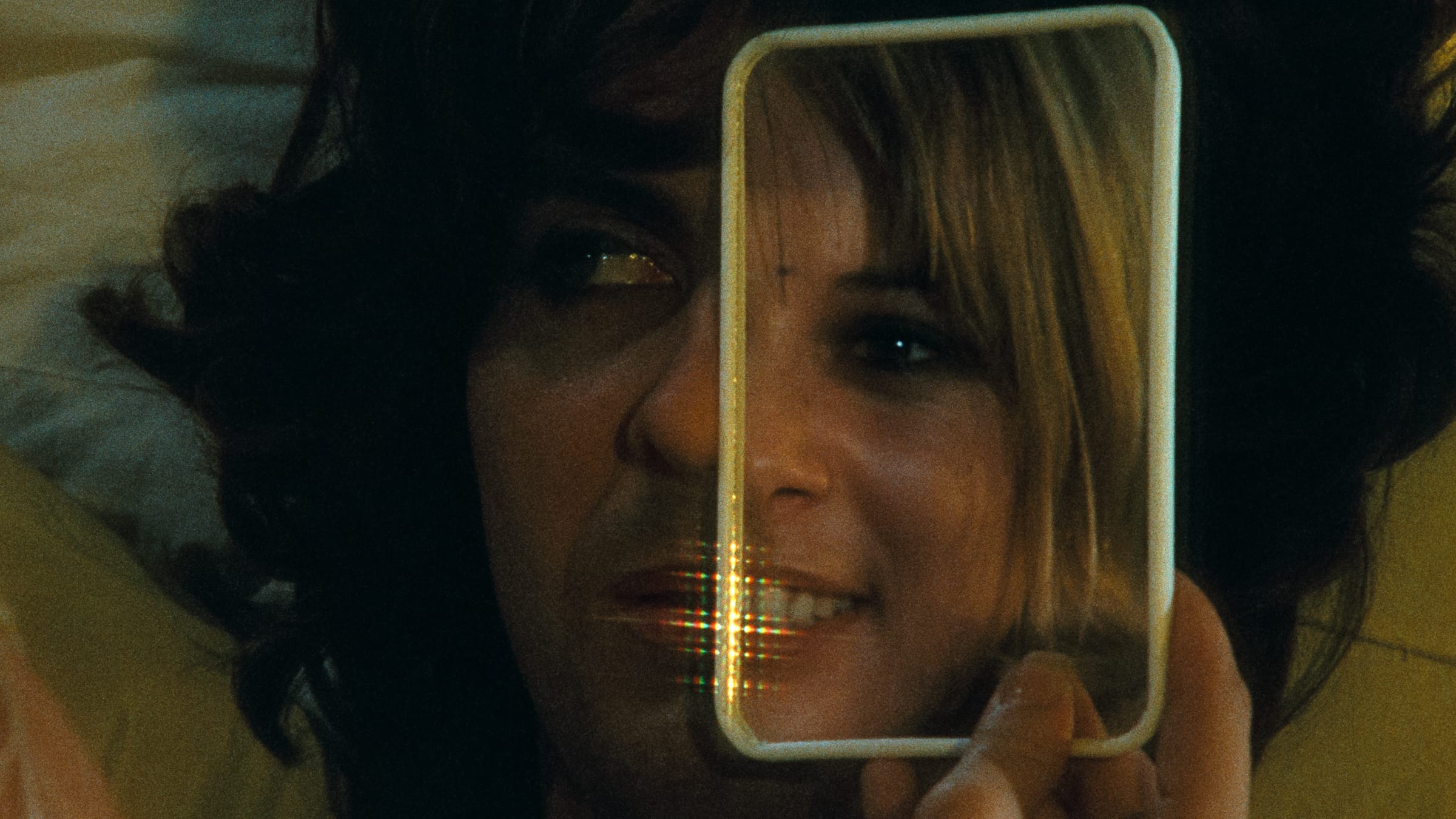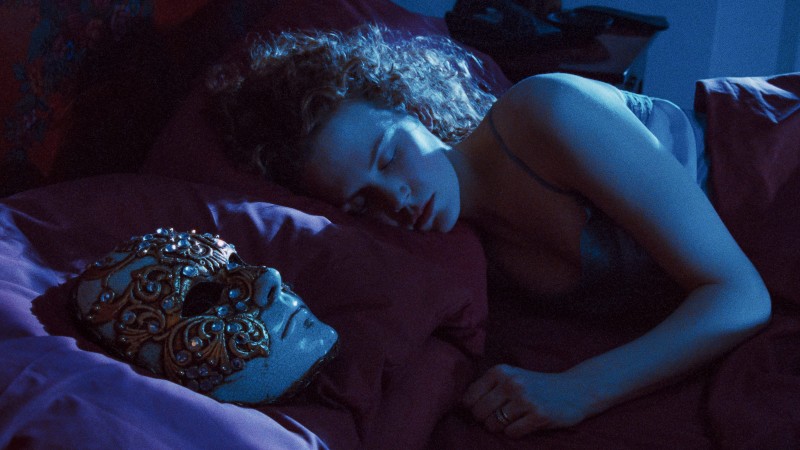As befits a study of fragmented identity, the picture is itself fractured, switching pace and genre just before the halfway point. If the film splits into two unequal parts, perhaps this essay should follow suit. After all, I have so far left unmentioned the figure without whom Performance would never have existed: the former artist Donald Cammell, a self-proclaimed “painter who happens to make films.” Cammell conceived Performance (his initial idea was to cast his buddy Marlon Brando as an American gangster in London) and wrote the script, feeding into it his obsessions, from Jorge Luis Borges and Kenneth Anger to mushrooms, magick, and ménages à trois; he secured the involvement of his friends Jagger, Fox, and Gibbs; and it was he who asked Roeg, whose résumé included films by David Lean, François Truffaut, and John Schlesinger, to be his cinematographer. Already in the process of teeing up what would have been his debut feature, Walkabout (1971), Roeg was reluctant to photograph any picture that he wasn’t also directing, so Cammell suggested they helm the project together.
The gangster-movie element of Performance was more capacious until Warner Bros. realized that it had on its hands a Mick Jagger vehicle in which the Rolling Stone was left unturned for the first forty-five minutes. This would have been an unusual waste of star power at any point, but coming at the height of the Stones’ notoriety (the production was sandwiched between the infamous Redlands drug bust in 1967 and the horror of Altamont in 1969) as well as their creative accomplishment (Beggars Banquet in 1968, Let It Bleed a year later), it looked plain perverse.
A reedit, undertaken in Los Angeles by Cammell and Frank Mazzola, introduced a brief, appetite-whetting flash-forward of Turner, pruning away some of the gangster material in the process. But even without this adjustment, it isn’t as if the film’s second half bears no relationship to its first. Rather, the trippier later section regurgitates what has happened before in ways that are now an established part of film grammar: think of Robert Altman’s 3 Women, Apichatpong Weerasethakul’s Tropical Malady, and David Lynch’s Lost Highway and Mulholland Dr. Dialogue, imagery, and characters resurface in a kind of cinematic acid reflux. “A gangster movie is gradually absorbed by a hippie pastoral,” wrote Wollen, “but there remains an irreducible core of violence, which psychedelia and music and sex cannot ever overcome—with which, indeed, they are covertly complicit.”
By all accounts, the neophyte directors worked in concert on set, their ideas harmonious and indivisible. “He was like a brother,” said Roeg. But the ways in which their careers subsequently diverged didn’t help make Cammell’s contribution to Performance appear equal or ensure he received due credit from critics and historians. Roeg put out a movie every three or four years until the midnineties, and directly inspired fledgling British auteurs such as Christopher Nolan and Lynne Ramsay; Danny Boyle called him “the great iconoclast, who took time and twisted and stretched it.” Cammell, on the other hand, completed only three more films, including the expertly disturbing 1987 thriller White of the Eye, before his particularly gruesome suicide in 1996. After shooting himself in the head, he took forty-five minutes to die while holding up a mirror so he could watch himself, and invoking Borges, whose image is glimpsed at the end of Performance—in a final scene that also culminates with a bullet to the brain.
There are no references to Cammell in “E=MC2,” and the allusive, associative, cubist editing style of Performance was assumed to have originated with Roeg, given how fully he utilized it across the rest of his oeuvre. In fact, Roeg wanted his name removed from the film when he saw how Cammell and Mazzola had reshaped it under pressure from Warner Bros. In his final print interview, Cammell said the editing of Performance evoked the “precision and formality” of Alain Resnais combined with the “flashy and glamorous” style of Aram Avakian. Then he added tartly: “However, that technique is nowadays referred to as Nicolas Roeg.”
Together, the pair created a film that has only deepened in relevance now that discussions about the performative nature of identity and gender have entered mainstream discourse. Though the project’s genesis predated Roeg’s involvement, Cammell said that his codirector “needled” him: “He provoked me, made me focus more and more clearly on what I was trying to say.” It was Roeg’s visual sensibility, Cammell graciously admitted, that “mobilized” and “improved” his own concepts. It’s appropriate that the movie concerns two men who become fully realized only in meeting and merging with each other. Turner, said Cammell, “believes himself to be at the end of his creative life. He’s a man in despair. And then destiny brings him his mirror image, Chas, the man in whom he sees what he was and what he could be again.”
Roeg and Cammell were hardly in despair in 1968; both were novices in the foothills of their own artistry. It is not fanciful, though, to see in their collaboration something like the same lightning connection that forms between Turner and Chas. Cammell said that he set out “to make a transcendental movie.” In achieving that goal, he stretched and challenged not just himself but cinema too. Even as Performance closed the lid definitively on the sixties, it opened the door to a radical new way of making films.







